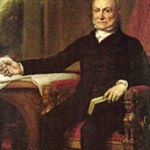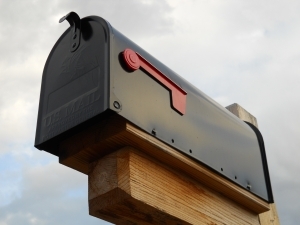Induction into the National Baseball Hall of Fame in Cooperstown, NY is the ultimate honor a major league baseball player can attain. Only the best and brightest players make the Hall of Fame. Players who played at least ten seasons in the majors at a high level are eligible for Hall of Fame election five years after their retirement.
Every year, sportswriters who have been members of the Baseball Writer’s Association of America for at least ten years vote in the Hall of Fame election. Voters can vote for up to ten players from the list of candidates, and players with 75% of The election happens toward the end of the year, and the results are announced in January. If a player gets 5% of the vote or more, they remain eligible for the next year’s election.
A player who fails to receive 5% of the vote is no longer eligible for election. These players are often said to be “one and done”. A player can remain on the ballot for up to fifteen years, assuming they never fall below the 5% threshold. So, each election contains a number of returning candidates and several candidates that are eligible for the first time.
Since a player becomes eligible five years after their retirement, we know what players will become eligible in future elections. We can look at these players, and the list of players currently on the ballot, and try to project which ones will and won’t be elected in a future year, which players will remain on the ballot, which will drop off, and which will receive more and less votes than previous years. In another article, I took a look at the next election, for the Hall of Fame class of 2009. In this article, I want to look at the election after that, for the Hall of Fame class of 2010.
The list of players who will be eligible for election into the Hall of Fame for the first time in 2010 includes (in alphabetical order): Roberto Alomar, Kevin Appier, Andy Ashby, Ellis Burks, Andres Galarraga, Pat Hentgen, Mike Jackson, Eric Karros, Ray Lankford, Barry Larkin, Edgar Martinez, Fred McGriff, Shane Reynolds, Robin Ventura, and Todd Zeile.
This group is interesting because there are several players who I feel belong in the Hall of Fame, several of whom will probably get elected eventually. None of these players are a slam dunk first-year inductee, however, like Rickey Henderson should be in the 2009 election. Let’s take a look at the fifteen new candidates and see how they may fare in the 2010 Hall of Fame election (in order of their HOF chances, in my opinion).
Note, statistics listed as three decimals separated by slashes (ex. .300/.400/.500) stand for batting average, on-base percentage, and slugging percentage. These are known as “rate stats” because they tell us how often a player did something. Career totals, such as 500 home runs, are called counting numbers, because they tell us how many times something happened.
The Hall of Famers
Roberto Alomar (2B): A twelve time all-star and ten time gold glove winner, Alomar was probably the best second baseman of his era. He hit .300/.371/.443 over his 17 year career. He had some pop, as exhibited by his 210 career home runs and 502 career doubles, and could swipe a base, with 474 in his career. His ability to hit for average, get on base, steal bases, and field his position like few others combine to make Alomar one of the best second baseman of the last 25 years.
Barry Larkin (SS): Also a twelve time all-star, Larkin played his entire 19-year career for one team, the Cincinnati Reds. The 1995 NL MVP, Larkin also won three gold gloves, and likely would have won more if he was a contemporary of Ozzie Smith. Hit .295/.371/.444 for his career, with 397 steals against only 77 caught. It all adds up to an excellent Hall of Fame case for a middle infielder. The one knock against Larkin is that he was injury prone; of his 19 seasons, he appeared in more than 150 games in a season only four times.
Borderline
Edgar Martinez (DH): A tough case on for two reasons. While Larkin and Alomar were excellent defensive middle infielders, Martinez spent the majority of his 18 year career as a designated hitter. Also, his rate stats are excellent (.312/.418/.515), his “counting stats”, in other words, career totals for key categories, don’t jump off the page. This is in part due to the fact that of his eighteen seasons in the majors, he played in less than 100 games in 6 of them. He finished with 2,247 career hits, 309 career home runs, and 1,263 RBI. He was a seven time all-star, and won two batting titles. He led the league three times in on base percentage (OBP), and finished in the top 10 an impressive seven other times. Martinez never won an MVP, but was one of the most respected hitters of his time, so he’s probably worthy of induction. Having him in certainly wouldn’t bother me, but he has an uphill battle to fight with voters due to his lack of counting numbers and the fact that he was a DH for most of his career.
Fred McGriff (1B): Another interesting case. For me, a Hall of Famer should have both great career numbers and a stretch of dominance where they were among the best in the game. McGriff was never really dominant; he was just incredibly consistent, and consistently very, very good. He never hit more than 37 home runs in a single season, but hit over 30 in a season ten times, including seven in a row at one point. He had eight seasons where he drove in over 100 runs, but never drove in over 107 in any season. His rate stats are very good across the boards (.284/.377/.509), although again, not good enough to make him a lock for a first baseman. His counting stats are also very good, including 493 home runs and 1,550 RBI. Even if he’d been able to hang on and get the 7 additional home runs he’d have needed to finish his career with 500, he still wouldn’t be a Hall of Fame lock. McGriff’s candidacy will be interesting, as he was often overshadowed by the big boppers of his era, some of who are now tied up in the steroid controversy. Will his lack of dominance keep him out? Will voters consider his 493 home runs enough?
Very good, but not HOF
Andres Galarraga (1B): Very, very good over his nineteen year career, with .288/.347/ .499 rate stats and 2,333 hits, 399 home runs, and 1,425 RBI. His five years in Colorado (a hitting paradise at the time) help his totals, but even with those numbers, he still falls short. Five all star appearances and two gold glove awards help, but still not enough. Saying Galarraga is no diss, though…as he was a very, very good player for a long time.
Ellis Burks (OF): Burks was a talented hitter who was strong defensively and on the basepaths early in his career. Injuries kept him off the field too much, however, and slowed him on the field to the point where his defense and baserunning were below average. Burks finished with nice rate statistics of .291/.363/.510, but his counting stats are well below HOF norms for an outfielder. He finished with 2,107 hits, 352 home runs, and 1,206 RBI. Like Galarraga, his numbers are helped by 4 ½ years in the thin air of Colorado. Burks was a two time all star and won a gold glove early in his career. Another very, very good player, but not Hall of Fame caliber.
Kevin Appier (SP): The first pitcher on the list, and a good one. Appier finished his 16 year career with a 169-137 record and a 3.74 ERA. He was an all star once in his career, and led the league in ERA once, but never won more than 18 games in a single season. Playing the majority of his career in Kansas City surely suppressed his win totals, but even when we take that into consideration, Appier falls well sort of Hall of Fame standing.
No Chance
Ray Lankford (OF): A talented player with a combination of speed and power, but nowhere near being Hall of Fame worthy. .He had 272/.364/.477 rate stats with 238 home runs and 258 stolen bases in 14 seasons. He was an all-star once.
Eric Karros (1B): A former Rookie of the Year who had five 30 home run seasons and five 100 RBI seasons, but only 268/.325/.454 rate stats. The Los Angeles Dodgers all time home run leader, and hit 284 for his career, but never made an all star team.
Robin Ventura (3B): Six time gold glove third baseman played on two all star teams during his 16 year career. Hit .267/.362/.444 with 294 career home runs.
Pat Hentgen (SP): Posted a 131-112 record and a 4.32 ERA during his 14 year career. A three time all star, Hentgen won the Cy Young award in 1996 when he went 20-10 with a 3.22 ERA. Twice led the league in innings pitched, complete games, and shutouts, but was never really productive after age 30, and overall, his career is only slightly better than league average.
Todd Zeile (3B): .265/.346/.423 with 253 home runs during his sixteen year career. Never an all star. Never led his league in any category.
Shane Reynolds (SP): 114-96 with a 4.09 ERA during his thirteen year career. Control artist played on one all star team and had a few very good seasons, including a 19 win season in 1998.
Andy Ashby (SP): 98-110 career record with a 4.12 ERA in fourteen year career. Made two all star teams, but overall, slightly below league average for his career.
Mike Jackson (RP): 62-67 with a 3.42 ERA and 142 saves in seventeen seasons. Played in 1,005 games, all but seven in relief. Nice career ERA and long, productive career, but nowhere near Hall of Fame caliber for a relief pitcher.
The 2010 Hall of Fame Voting
The 2010 Hall of Fame election will be an interesting one, for sure. I assume that in 2009, Rickey Henderson, in his first year of eligibility, and Jim Rice, in his last, will be elected to the Hall of Fame. I believe Andre Dawson, who received 65% of the vote in 2008, also has a chance in 2009, although more than likely, he will not be elected. So, what about 2010?
From the above descriptions, you can see that the 2010 class has two players I believe to be Hall of Famers, and two more who are borderline candidates. My initial thought on the 2010 election, however, is that there will be nobody elected to the Hall of Fame. I believe that Alomar and Larkin are worthy of election, and will some day be voted into the Hall of Fame, but I have doubts that the writers will elect them in their first year of eligibility. If either of them were to be elected, I would bet on Alomar.
Edgar Martinez and Fred McGriff will also receive some votes, although they will fall well short of induction. They will carry forward into future elections, and may both some day be elected. I especially see Martinez as someone who eventually gains entrance into the Hall of Fame. I do not foresee any of the other new candidates in 2010 receiving the necessary votes to remain on the ballot in future years.
Several players already on the ballot will get a substantial number of votes again in 2010, including Bert Blyleven, Lee Smith, Jack Morris, Tim Raines, Mark McGwire, and if he is not elected in 2009, Andre Dawson. With these players returning, and four newly eligible players likely to garner a solid number of votes, I believe it will be difficult for any one of them to garner the required votes necessary to be elected.



